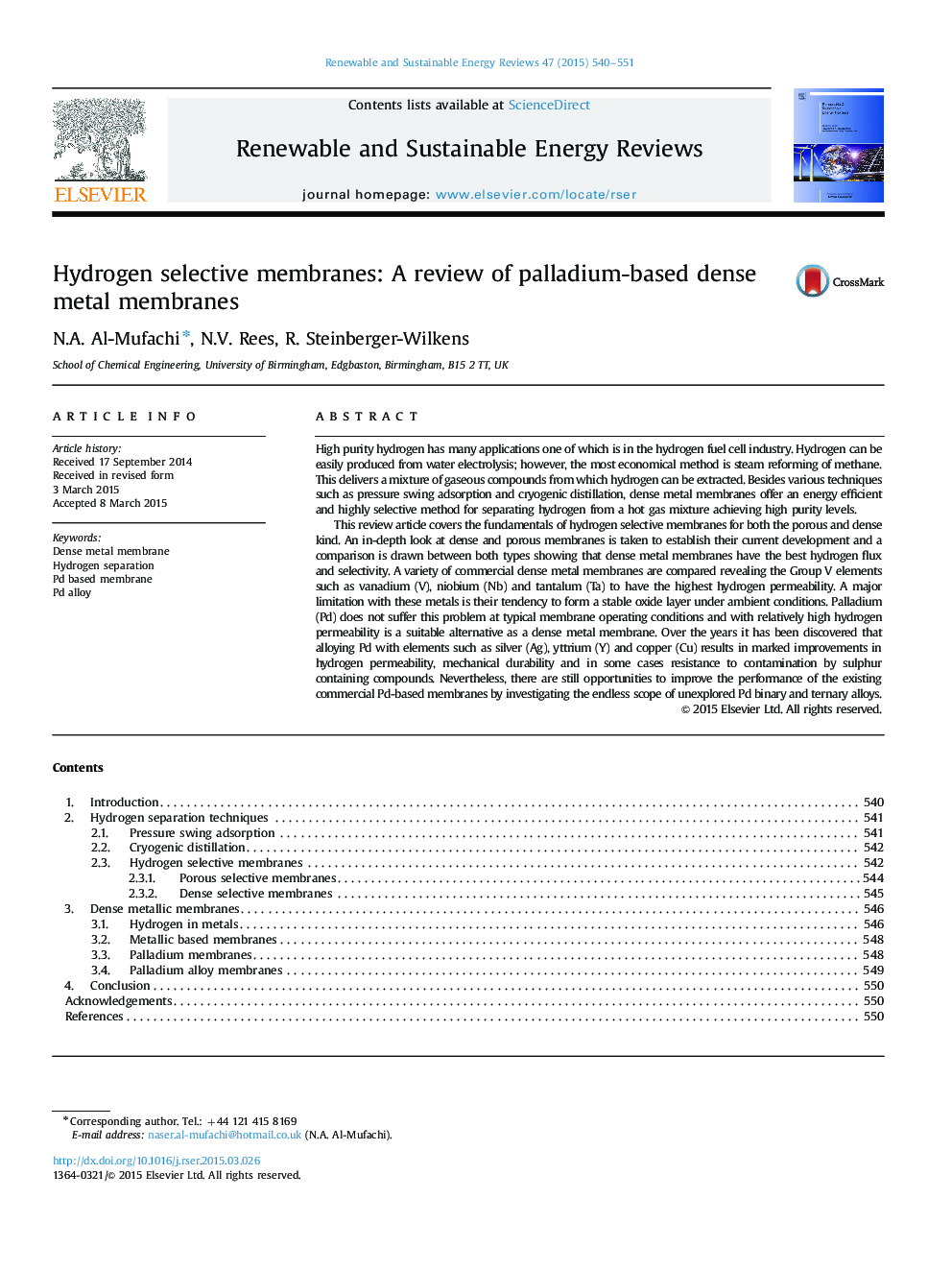| Article ID | Journal | Published Year | Pages | File Type |
|---|---|---|---|---|
| 8116818 | Renewable and Sustainable Energy Reviews | 2015 | 12 Pages |
Abstract
This review article covers the fundamentals of hydrogen selective membranes for both the porous and dense kind. An in-depth look at dense and porous membranes is taken to establish their current development and a comparison is drawn between both types showing that dense metal membranes have the best hydrogen flux and selectivity. A variety of commercial dense metal membranes are compared revealing the Group V elements such as vanadium (V), niobium (Nb) and tantalum (Ta) to have the highest hydrogen permeability. A major limitation with these metals is their tendency to form a stable oxide layer under ambient conditions. Palladium (Pd) does not suffer this problem at typical membrane operating conditions and with relatively high hydrogen permeability is a suitable alternative as a dense metal membrane. Over the years it has been discovered that alloying Pd with elements such as silver (Ag), yttrium (Y) and copper (Cu) results in marked improvements in hydrogen permeability, mechanical durability and in some cases resistance to contamination by sulphur containing compounds. Nevertheless, there are still opportunities to improve the performance of the existing commercial Pd-based membranes by investigating the endless scope of unexplored Pd binary and ternary alloys.
Keywords
Related Topics
Physical Sciences and Engineering
Energy
Renewable Energy, Sustainability and the Environment
Authors
N.A. Al-Mufachi, N.V. Rees, R. Steinberger-Wilkens,
